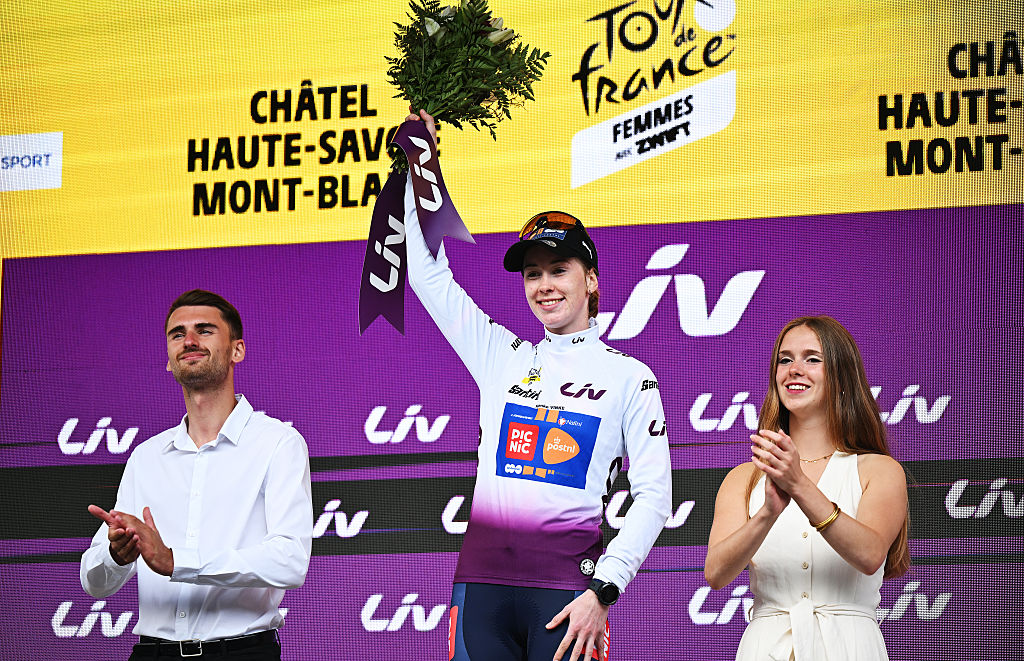Operación Puerto, the evolution of the internet and the Cyclingnews News Flash
How a doping scandal altered the course of Cyclingnews
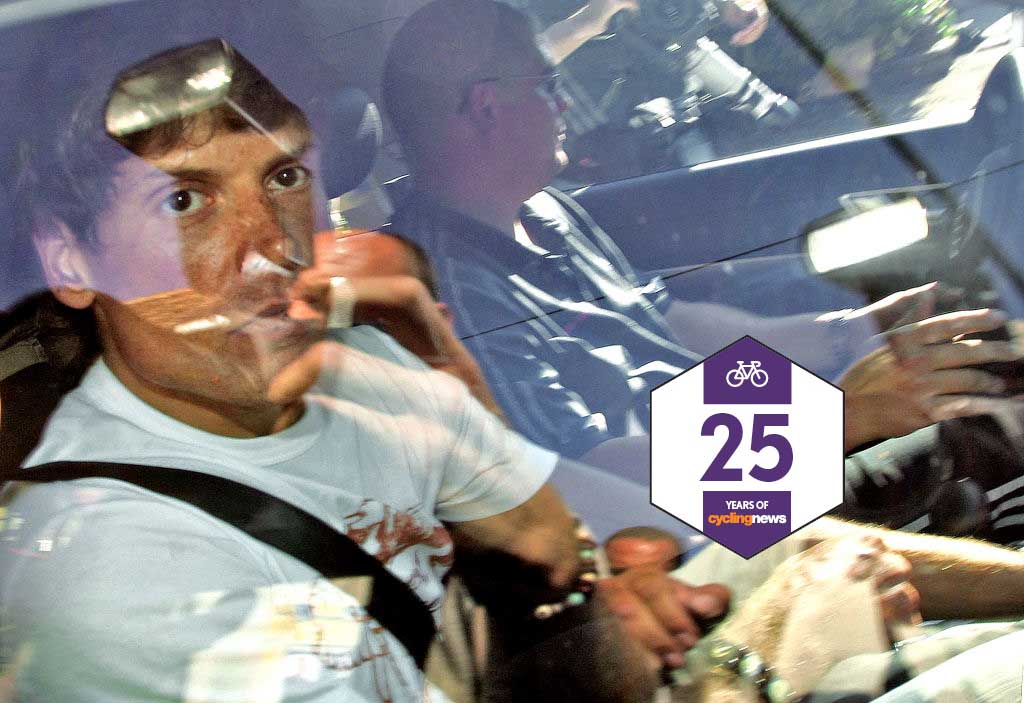
This year, Cyclingnews celebrates its 25th anniversary, and to mark such an important milestone, the editorial team will be publishing 25 pieces of work that look back at the sport over the last quarter of a century.
The evolution of Cyclingnews closely mirrors that of the internet as a whole. How the site posted and reported on the news - from a single post per day of news mixed with results, cobbled together through various sources via email, to the stream of news, results and features you see today evolved rapidly along with the exponential growth and speed of the internet.
As the site expanded so too did the urgency of the content. When the Festina scandal erupted at the 1998 Tour de France, Cyclingnews was in its infancy. At the same time, cycling fans were flocking to the internet, reading the news and discussing events on Usenet groups and forums and, later, on social media, pro cyclists began to find their doping misdeeds were suddenly very much public. By the time the next major doping thread blew up with Operación Puerto eight years later, the sport's seedy underbelly was well and truly and embarrassingly exposed.
When Cyclingnews began in 1995, there were only about 23,500 websites in existence and 40 million users accessing information through Netscape Navigator, Internet Explorer or AOL. Most users were in the United States and looking at mostly text-based sites on dial-up connections at unthinkably slow speeds of 56kbps or less, which is why Cyclingnews' early posts consisted mostly of single posts - with results, news and interviews intermingled - it gave users something worth the wait for the page to load.
As time went on, races were given their own pages, but with the huge volume of results being posted, news continued as multi-story editions until the site redesign in 2009.
The change from the more laid-back pace of a newspaper-like publishing schedule came in tandem with the more widespread access to broadband speeds and far more users: by 2006 there were around 700 million users, and today roughly 60 per cent of humans on the planet are on the web.
Alongside the bigger, faster internet came the rocket-fuelled EPO era of cycling: if Lance Armstrong fired up the engines, no other storyline exploded quite like Operación Puerto, and it was heralded in a flurry of posts entitled "News Flash".
The latest race content, interviews, features, reviews and expert buying guides, direct to your inbox!
News flash: There's a doping problem in pro cycling
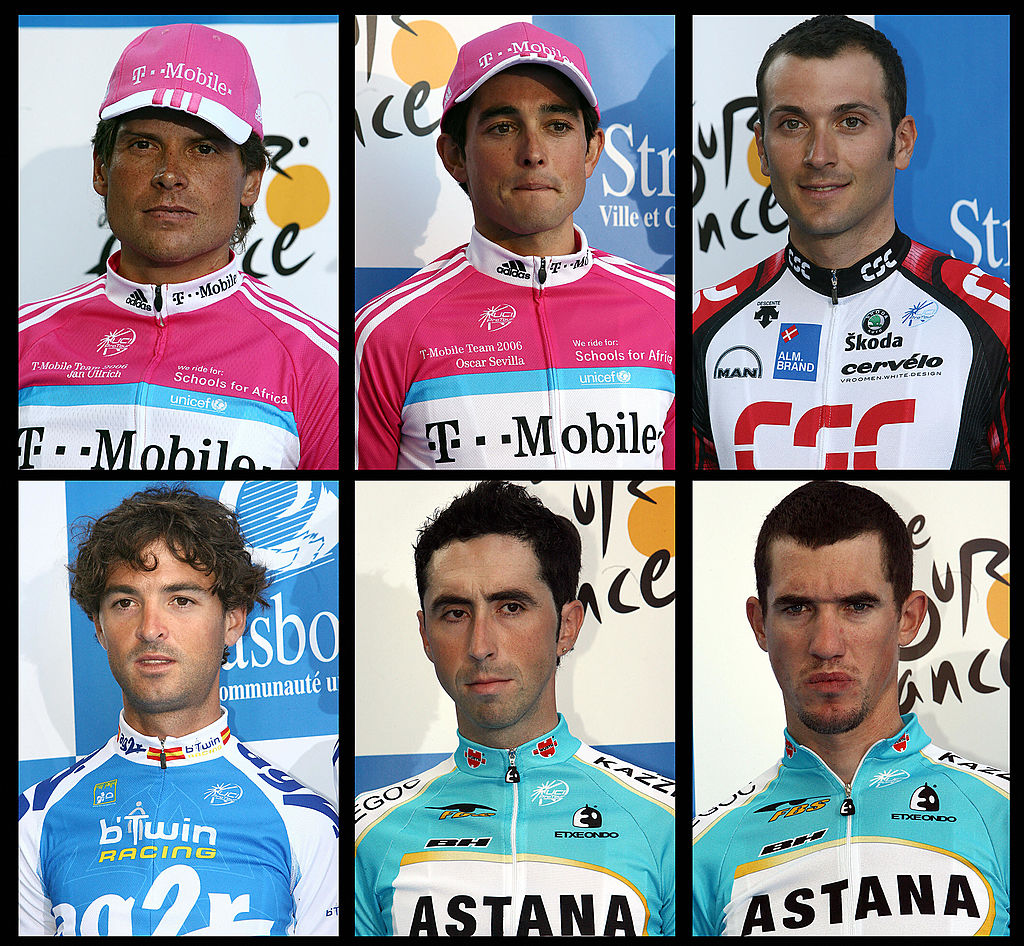
The Festina scandal - aptly entitled 'The drugs scandal update' - was one of the first news extras, but it wasn't until the site's major redesign in 2002 that the first official 'News Flash' was posted: the five wildcards for that year's Tour de France.
However, before long, the News Flash became synonymous with doping.
During the 2002 Giro d'Italia, two riders were nailed for NESP (novel erythropoiesis-stimulating protein, a modified version of EPO), Stefano Garzelli was popped for a banned diuretic, and Gilberto Simoni came up positive for cocaine - which led his Saeco team to lose its wildcard spot for the Tour de France. All of these breaking stories were News Flash-worthy.
Other News Flash subjects included Jan Ullrich's Team Coast, its collapse and recreation as Bianchi in 2003, the death of Andrei Kivilev, and the UCI Track World Championships being moved from China because of the SARS-1 epidemic, and the death of Marco Pantani, but doping cases proved to be the most frequent breaking news.
There was the NAS raid on the Giro d'Italia, doping shenanigans from Raimondas Rumsas, the police raid on Cofidis headquarters in 2004 and the revelations of Kelme's Jesus Manzano that led to that team's exclusion from the Tour de France.
Then came EPO positives: Dave Bruylandts, Filip Meirhaeghe, the admission by David Millar. Then the blood doping cases of Tyler Hamilton and Santiago Perez.
At the time, Cyclingnews' homepage was largely dedicated to race results, recalls long-time editor Jeff Jones (1999-2006). Each race had multiple links underneath for each stage, making for an incredibly busy homepage. To run individual news, he says, would have been logistically difficult.
"There was too much per day to fit on the homepage," Jones says. "It was already horribly busy and we tried to squeeze as much as possible into a small area."
Deviating from the normal one or two editions of news today only happened when the news had a bit of urgency or was of high interest to readers, and, until 2004, only came a dozen or so times per year. But when a doping case came out, it resulted in an inevitable avalanche of news.
Take September 22, 2004, when Tyler Hamilton emerged as the first-ever athlete to test positive for a homologous blood transfusion - it came out as three extra news editions in two days and numerous other news flashes throughout his appeal process. But there was nothing like 2006.
On May 23, 2006, a hint of something huge brewing in Spain began with a story: "Liberty Seguros director Manolo Saiz arrested on doping charges". It would prove to be the longest thread in Cyclingnews history.
200 blood bags, 'Birillo', 'Piti' and 'Zapatero'
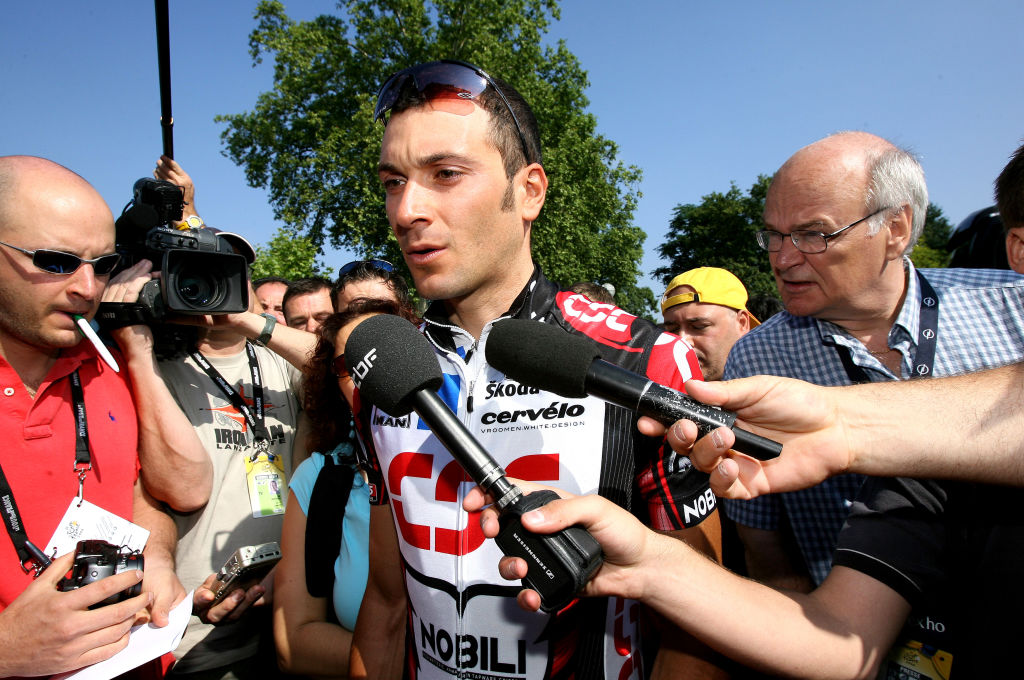
After months of phone taps and surveillance, watching athletes come and go, investigators from the Unidad Centro Operativo (UCO) and the Spanish civil guard staged a raid on an apartment belonging to ex-Kelme team doctor and 'gynaecologist' Eufemiano Fuentes, where they found a huge store of anabolic steroids and hormones, some 200 blood bags and enough freezers and gear to dope up dozens if not hundreds of athletes.
Liberty Seguros manager Manolo Saiz - literally caught holding the bag (€60,000 in cash) - and four others were taken into custody including Fuentes, José Luis Merino Batres, who ran the lab in Madrid; Alberto Leon, a professional mountain bike racer suspected of acting as a courier; and Jose Ignacio Labarta, the assistant sports director of Comunidad Valenciana.
Fuentes was accused helping riders with "the illegal practice of auto-transfusing blood to riders during stage races, which is one of the most difficult doping practices to detect, as it uses the rider's own blood", as Cyclingnews reported.
José Merino just happened to be the same Merino mentioned in the explosive testimony of Jesus Manzano, who tried to expose these doping practices two years earlier, but who was derided and even threatened by his peers.
It was only May and the Giro d'Italia just finishing up, with leader Ivan Basso forced to issue denials as Spanish media named him as being on Fuentes' list of names coded, it would later emerge, by using the names of riders' pets.
Soon, Saiz' team was fighting for its survival as Liberty Seguros pulled its support from the team. Then it was Phonak who, in the previous years, had those doping incidents with Hamilton and Perez, who were under scrutiny as well as T-Mobile after Oscar Sevilla admitted to visiting the clinic 'for training plans'.
By June, Phonak sidelined Santiago Botero and Jose Enrique Gutierrez (Giro d'Italia runner-up) after their implication in the scandal and Comunidad Valenciana DS Jose Ignacio Labarta resigned despite protesting his innocence in the affair. Phonak said its future depended on the Tour de France and Floyd Landis.
With the Tour de France only weeks away, Saiz's team was rescued thanks to Alexandre Vinokourov, who brought on Astana as title sponsor thanks to strong support from his home country Kazakhstan. The team debuted as Würth in the Criterium du Dauphine as the team's licence remained in dispute and Saiz left the team.
In mid-June, the ASO withdrew the wildcard invitation to the Tour de France for Comunidad Valenciana but under the UCI's nascent ProTour rules, once Astana-Würth's licence case was decided on June 22 the team was protected from exclusion.
2006 Tour de France
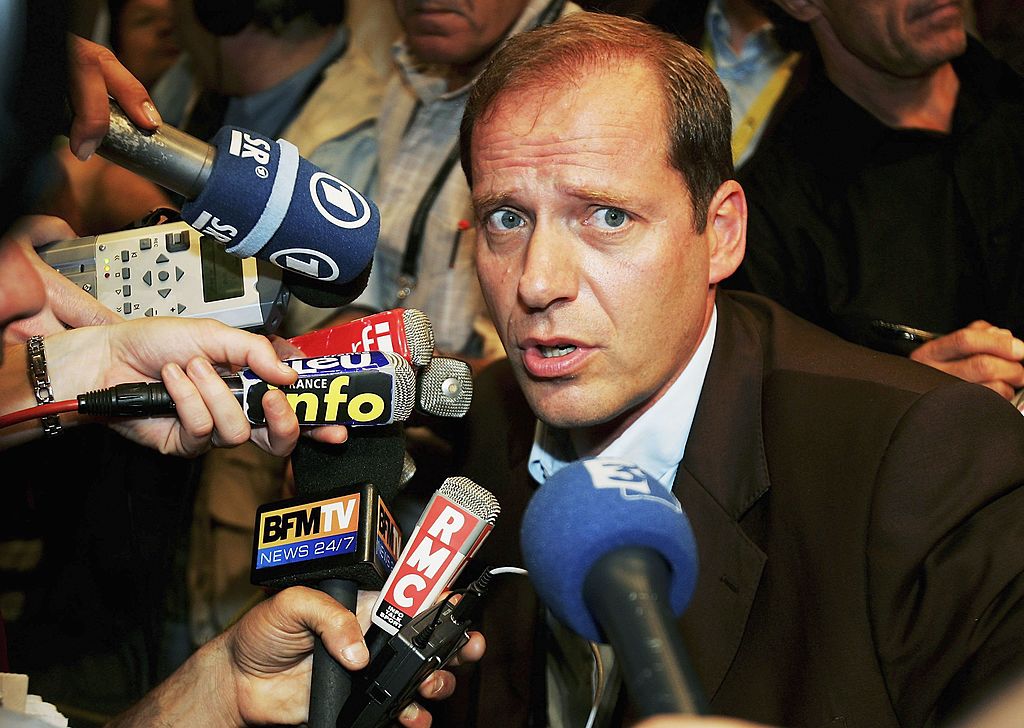
It's easy to forget that all of this was taking place amid the Armstrong vs L'Equipe case: remember that time when French researchers went back to the 1999 Tour de France and tested the samples for EPO? And that Vrijman report the UCI commissioned that supposedly cleared Armstrong? It's all so ludicrous in retrospect because it was all there - the constant thrum of doping news, Manzano's revelations, Armstrong with Michele Ferrari, Armstrong threatening Greg LeMond, Armstrong calling for Dick Pound's exit from WADA, WADA 'slamming' the UCI over the Vrijman report... and then Operación Puerto.
If the French had hopes that after Armstrong retired they could finally count on an open and clean Tour de France, the week before the Tour proved they were up against more than just one Texan. El Pais published more details from the case, writing there were 58 cyclists and 15 from the now-former Liberty Seguros team involved.
News Flash June 29, 2006: More names released
"The list, which comes from the Spanish Civil Guard's official report on the doping probe, contains several big names, and there is a strong possibility that the Tour de France could be raced with a very different list of favourites."
Astana-Würth OK to race: The ASO, its hand forced, appealed to the CAS to keep Astana-Würth at home but the team defiantly headed to Strasbourg for the Grand Depart. The CAS said the team should be allowed race.
News edition: Ullrich, Sevilla and Pevenage suspended
"At 9:34 am on Friday morning, T-Mobile announced that it has suspended Jan Ullrich, Oscar Sevilla and Rudy Pevenage in the wake of the Operación Puerto affair. The three were implicated in the doping scandal as being clients of Dr Eufemiano Fuentes. None of them will take part in the Tour de France.
"As the announcement was made, the three sat in the team bus on their way to what was supposed to be a "meet-and-greet" press conference. They were informed on the way."
Meanwhile, Johan Bruyneel: "I don't think we can start the Tour de France with those kind of doubts and uncertainty. It's bad for the riders and there's already enough suspicion around. No one, not the riders, or the media or the fans will be able to focus on the race. I don't think the Tour de France needs this and I hope there will be something resolved soon for everybody's sake."
In typical cycling fashion, the riders and teams tried to just push through and pretend like there was nothing wrong until the very last minute.
News Flash: Astana Würth leaves the Tour
"Dutch television's sports anchorman Mart Smeets has just reported that the Astana-Würth team has left the Tour de France."
Active Bay, the Astana-Würth team's management company, confirmed they would withdraw from the Tour. "In view of the content of the dossier sent to Spanish authorities, Active Bay has decided, in accordance with the Ethical Code signed between the UCI ProTour's teams [for riders not to race while under investigation for doping], to withdraw from the Tour de France those riders that appear in the above-mentioned dossier."
News Extra: More riders named by UCI, Leblanc: "An open Tour with clean riders", Team CSC: Ignorance or bluff?, McQuaid: Saddened rather than shocked
As the UCI issues a statement naming nine riders from the Tour start list who should be excluded from the race: "The involvement [of these riders] does not mean that an anti-doping violation has been established. However, the indications of the mentioned report are serious enough."
Tour director Jean-Marie Leblanc: "We will ask the teams concerned to apply the ethical charter that they've signed and to expel the implicated riders. If they don't, we will do it ourselves."
"I hope we can all start serenely on Saturday. This is an organised mafia that spreads doping practices. I hope we can clean up everything now; all the cheats should be kicked out. then, maybe, we will get an open Tour with clean riders; a Tour in which there is space for ethics, sport and entertainment."
Ivan Basso: "My opinion is that I work hard for this Tour, and I think only about this race. My job is to ride the bike fast, and after the Giro, I put 100 per cent [effort into] the Tour de France. I only read what has been written... I don't know more."
UCI President Pat McQuaid: "This is hard for cycling, but I have to look at the positive side. It has to be a message to all the other riders in there that no matter how clever you think you are, you will eventually get caught out."
News Extra: More riders suspended: Basso and Mancebo out, Ullrich's ex-trainer calls it a "catastrophe", Belda questioned
ASO public relations man Bernard Hinault told radio RTL that he expects 15-20 riders to be ejected before the day is out. The UCI will then ask the national cycling federations to start disciplinary proceedings against the riders named in the Spanish network.
Teams spokesman Patrick Lefevere said that there will be no replacements for the riders who have been taken out. "We have unanimously decided to send all the riders who are on the list home, and not to substitute them."
News Extra: Team CSC faces the press, Mancebo ends career, New doping charges for CSC?, Reactions to Ullrich suspension, Bruyneel maintains focus
CSC and manager Bjarne Riis remained defiant until the team's afternoon press conference when he finally caved to pressure and withdrew Ivan Basso from the Tour.
"Shortly before 2pm Friday, Team CSC manager Bjarne Riis and spokesperson Brian Nygaard walked into the salle de presse in Strasbourg's Palais de la Musique et de Congres to deliver a statement and answer questions. But with the room soon morphing into a boxing arena with around 200 journalists and photographers all wanting a piece of the action, the crowd moved to the much larger conference de presse in the Auditorium Schweitzer.
"Maybe most of you have heard already. We had a meeting with all the teams this morning, and in that meeting, we made a decision - I made a decision - that Ivan would not participate in the Tour," began Riis.
"If I let Ivan do the Tour, I can see all of you here - and there's a lot more outside - there will be no race for him, because he will be hunted, day and night. It won't be good for Ivan, it won't be good for the team, and it certainly won't be good for the sport."
"A shot in the arm for cycling"
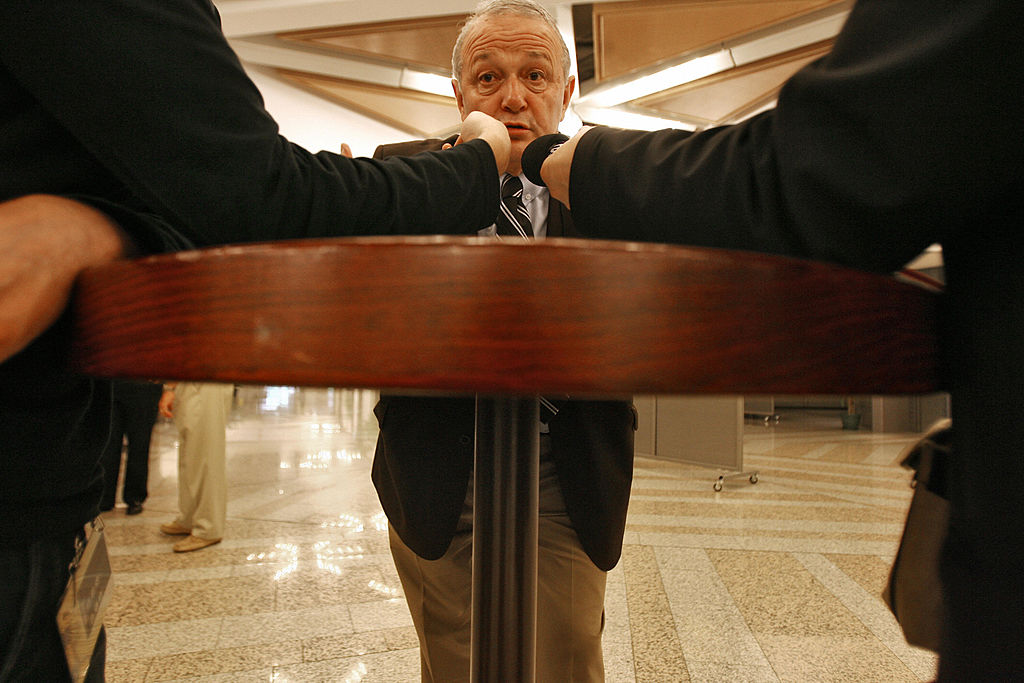
Cyclingnews' live coverage of the 2006 Tour de France began on July 1 with the pithy comment: "Welcome, dear readers, to the new Tour de France. This is a more slimmed-down version of the old Tour de France, with fresh faces, lower power-to-weight, and doesn't give you heartburn. After Operación Puerto caused 13 to be removed from the Tour's starting list yesterday, we will see a Tour without top favourites Jan Ullrich, Ivan Basso, Alexandre Vinokourov, or Francisco Mancebo. Taking a positive approach, one could say Operación Puerto has been a real shot in the arm for cycling, and one that it has needed for a while," wrote Jeff Jones.
By the end of the Tour de France, some 58 riders were named in the affair, although some - including Alberto Contador - would later be cleared of involvement. Others were never formally identified.
After the immediate flood of news wore off, the Operación Puerto thread became more of a marathon than a sprint. The anti-doping authorities had little power to sanction riders since the Spanish courts blocked federations from taking any action against athletes until their legal proceedings concluded.
Their legal proceedings did not conclude for almost ten years.
In between all the talk of doping, Cyclingnews still managed to get out news about the upcoming Tour de France. At least news that Fuentes used the names of riders' dogs as codes there was at least some comic relief. In his live coverage of the Tour, Jones tried to keep fans' spirits up with jokes about the case, but as the days went on the coverage turned exclusively to the Tour.
It was, after all, the first Tour de France after Lance Armstrong retired and the Tour was reinventing itself after seven years of the Texan's domination.
The maillot jaune changed hands ten times - with Thor Hushovd, George Hincapie, Tom Boonen, Serhiy Honchar, Cyril Dessel and Oscar Pereiro taking turns in yellow before Floyd Landis had his first day in the lead on stage 11, gave it up to Pereiro after the Spaniard went in a breakaway on a sizzling day to Montélimar and gained half an hour, then got it back on Alpe d'Huez, lost it on La Toussuire, then went on a 130km rampage on stage 17 and eventually won the Tour de France.
Of course, it wasn't long before his positive for testosterone was announced and the long, gruelling fight Landis put up before finally having his title stripped, and yet another exhausting news cycling of doping ensued.
Fans should have known what was going on, Jones says. It started with Festina and continued apace for eight more years until Operación Puerto and beyond and was splashed all across Cyclingnews.
"Doping was a theme, especially in the Armstrong years. But until Operación Puerto, you could have seen each case as a one-off, there was some deniability. But with Puerto, it was proof that doping was almost everywhere.
"As a fan, it was hard to get your head around the fact that everyone was doping. I thought, 'no - not Ullrich, he's too classy' - but it was a gradual realisation. How do you watch the sport knowing that?
"That time we were mourning the sport a bit. There's denial, anger and then finally acceptance. Of course, sport isn't separate from human nature - on the bike they're super-human but they are still just human beings in the end.
"It changed how I watched the sport - I could appreciate the spectacle but it just wasn't what it used to be."
By the end of 2006, Jones would leave Cyclingnews to start a bike-themed site called BikeRadar, the next year, Gerard Knapp would sell the site to Future with Daniel Benson taking over as managing editor.
The site continued to grow despite the fans' disillusionment, and the dark years left behind in the archive that still exists as the 'autobus'.
Obfuscation and delay
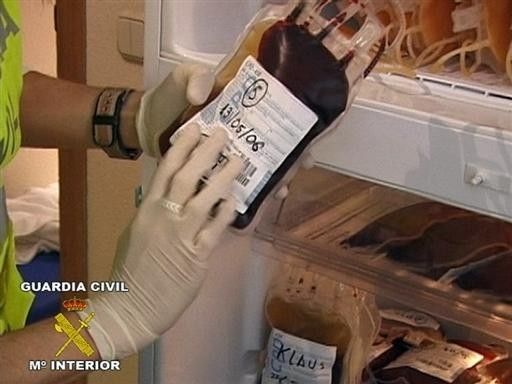
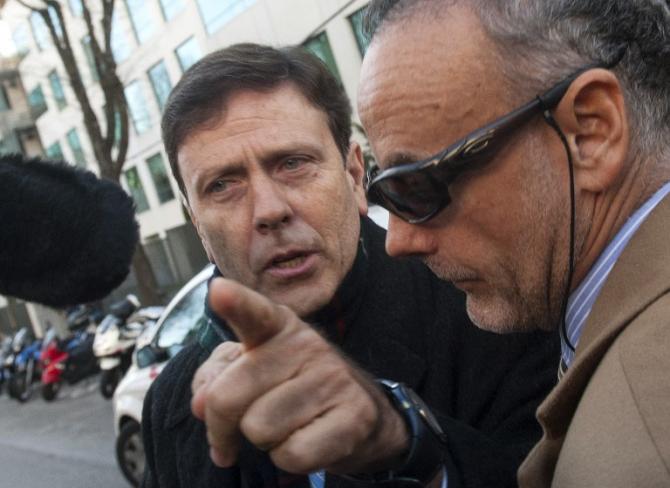
In the years after 2006, the Spanish courts opened and closed the Operación Puerto case. Then opened and closed it again, opened and closed it yet again, until it finally came to trial in 2013.
By then, it was more a denouement than a climax. It took place the same year that Armstrong, banned for life, confessed to having doped throughout his career, after the mountain of USADA Reasoned Decision documents had already detailed it all.
Fuentes was given a one-year suspended sentence but posted bail and had his punishment overturned three years later. The main legal problem was that doping was not a crime in Spain in 2006, so authorities went after Fuentes under public health laws.
The case provided physical evidence of the doping practices at the time: EPO in the banked blood showed riders were using the drug to boost red blood cells in the off-season then storing the blood for reinfusion before a big race.
Fake names and secret code words made Puerto into something like a dime-store novel : Basso: "I am Birillo", Scarponi: "I am Zapatero", Fuentes: "I am the famous cycling criminal". Jorg Jaksche finally broke down the omerta by telling all. From Ivan Basso's "I only intended to dope" to Tyler Hamilton's tell-all book The Secret Race, Operación Puerto provided yet another example of what cycling was until 2006.
It also exposed deficiencies in the anti-doping rules and helped lead to provisions for violations based upon evidence other than analytical tests. After hiding behind a wall of legal obfuscation and a carefully crafted calendar, Alejandro Valverde ('piti') was finally and definitively linked to Fuentes two years later.
The Italian CONI's anti-doping prosecutor Ettore Torri used guile and allegedly falsified documents to obtain the evidence suspected to be the Valverde's banked blood over the Christmas holiday, and then, when Valverde finally was forced to cross into Italy during the 2008 Tour de France, doping controllers could get a sample and prove Valverde's guilt through a DNA match. He was finally suspended in 2010.
The trial, then, offered little that was new, but did bring some humorous and sardonic anecdotes:
Jörg Jaksche when asked to clarify his performance in the 2006 Tour de Suisse.
"I said it wasn’t a race, more of a club championships. He asked me to clarify what I meant. So I said ‘yes, it was a club championship. The winner of the race was Jan Ullrich, a client of Fuentes, second was Koldo Gil, a client of Fuentes, third was me, fourth was Vicioso, another Fuentes client, sixth was Fränk Schleck’. Everyone in the court, even the judge was laughing. It was ridiculous.”
The Spanish courts continued to delay any action by anti-doping authorities well after the court case concluded. A judge ordered the evidence destroyed, while WADA and the UCI were forced to appeal, navigating delays until finally - the evidence from the case was long past the statute of limitations under the WADA Code.
When the evidence was at last handed over to anti-doping authorities in July, 2016, it was more than ten years after the fact. A German researcher performed DNA testing on 116 blood bags, getting 27 unique fingerprints, but could only confidently link seven athletes - four active, three retired - but what sport they competed in remains unknown.
Although it was suspected that athletes from football, tennis, and athletics were involved in Fuentes' doping ring, cycling took the hardest hit in the media and of course, on Cyclingnews.
The case changed the way fans viewed the sport and, now that Armstrong has confessed and the full scope of doping in the 1990s and 2000s has become clear, the scepticism was well warranted.
The cheaters haven't won, however.
The explosion of the internet from 40 million to 4.5 billion users over Cyclingnews' history has brought in new fans who follow its new stars and, hopefully, a sport with greater integrity. The formation of WADA, the hard work of investigators and the increased independence of anti-doping bodies are still rooting out cheaters, as Operation Alderlass has shown.
Cyclingnews no longer has to resort to 'News Flash' since converting to single news posts in 2009, replacing Dreamweaver and FTP with several iterations of content management systems and site designs, and we are still working 24-7-365 to bring the latest news to your fingertips.
Hopefully less and less will be about doping.

Laura Weislo has been with Cyclingnews since 2006 after making a switch from a career in science. As Managing Editor, she coordinates coverage for North American events and global news. As former elite-level road racer who dabbled in cyclo-cross and track, Laura has a passion for all three disciplines. When not working she likes to go camping and explore lesser traveled roads, paths and gravel tracks. Laura specialises in covering doping, anti-doping, UCI governance and performing data analysis.
